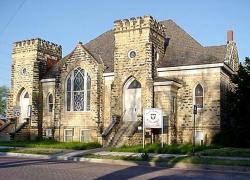 |
The Bukovina
Society of the Americas P.O. Box 81, Ellis, KS 67637, USA Martha McClelland , President info@bukovinasociety.org |
 |
|
|
||
| ||||||
THE REGIONAL DISTRIBUTION OF THE GERMANS IN BUKOVINA
by Josef Talsky translated by. Dr. Sophie A. Welisch,
Posted on the World-Wide Web It is well known that forebears of the Bukovina-Germans, who today have found a new homeland in Germany on this and on the other side of the “iron curtain,” in Austria, and to a lesser extent overseas, were brought to Bukovina after its annexation by Austria. State and private programs, which extended over several decades, resulted in the founding of the following German settlements:
In time numerous daughter colonies sprang up from these so-called core settlements. In all, there existed about 100 villages in which the Germans were in the majority or consisted of a substantial minority; in addition, there were nine urban municipalities as well as the region’s capital, Czernowitz. In the urban centers the Germans were always in the minority. Sources on the numerical representation of the Germans in Bukovina during the early years of their settlement remain sketchy. The first Austrian census, which yields relevant information, dates from the year 1869. Out of a total population of over 500,000 souls, approximately 40,000 were German. The Romanian census of 1930 recorded 80,000 Germans out of almost 900,000 people. With the population transfer of 1940, 85,000 Bukovina-Germans departed for Germany. The tasks of the Bukovinian colonists were threefold: first, they were to cultivate the land and thereby set an example of agricultural skills to the indigenous population. This task naturally fell to the agrarian settlers and was fulfilled by the Swabians in an exemplary way. The Austrian government identified its second task as the utilization and cultivation of the virgin forests of the region, which at that time were still uncharted. In this field the German-Bohemian lumberers showed themselves to be masters. Skilled workers were needed for the mining industry. Here Zipsers stepped in to fill this gap. Bukovina’s topography showed a great contrast, characterized by rolling hills and mountains. The rolling hills include:
The second period of German immigration centered almost exclusively on the lands of the large private landowners in Bukovina’s western region. Here the farming communities of Alexanderdorf, Augustendorf, Katherinendorf, Neu-Zadowa and Nikolausdorf were established. It took these colonists many years before they were able to transform the swampy regions into fruitful fields. In time Germans could be found throughout all Bukovina. There were not many villages or towns with absolutely no Germans. Often only craftsmen or individual official families lived among Romanian or Ukrainian villagers. Dispersion of individual settlements characterized the German linguistic enclaves. This proved especially detrimental in elections, since a German candidate for office had no chance of success. A review of the regional distribution of the Germans yields the following approximate results: of the over 100 settlements in Bukovina which showed a German minority or a significant minority, about thirty-five lay in the mountains, including four cities. Among the thirty-five rural communities, fourteen were core villages. Some seventy settlements could be found in the rolling hills, including six cities. Of the rural communities twenty-three were core colonies and the balance were daughter colonies. If we consider the distribution of the Germans in the individual river basins, we note the following: in the Dniester river basin there were no German settlements, while 21,000 Germans lived in fourteen settlements in Prut river basin, i.e. 24.7 per cent. In contrast to these figures, 14,000 Germans lived in twenty-four settlements in the Siret area, i.e., 16.5 per cent of the Bukovina-Germans. Along the Suczawa River there were thirty-three settlements, including by far the greatest number of Germans, namely 27,000, i.e., 31.8 percent; and in the Moldova river basin we find twenty-eight settlements with about 16,000 Germans, i.e., 18.8 percent. In the Bistritsa river basin 7,000 Germans (8.2 percent) resided in six communities. Of agrarian background, the majority of the Swabian colonists were brought into the province not only to cultivate virgin lands but also to demonstrate better work methods to the indigenous population. For this reason they were often settled in Romanian or Ruthenian villages, which bore non-German names. In addition to the purely German community of Neu-Itzkany, there existed communities with ethnically-mixed populations. But the latter did not hold true for the agricultural villages established on private property. As with the purely German villages on private lands, the German-Bohemian settlements [on state lands] bore German names, since they were founded in areas where no other inhabitants could be found far and wide. In conclusion something should be said about Bukovina’s municipalities. Although the Germans remained in the minority in the cities, they had contributed to their establishment, which has also been pointed out in histories dealing with colonization. At the time of its annexation by Austria, it is recorded that there were only two cities in Bukovina: Suczawa and Siret. At that time Czernowitz was simply a market place, but after it became the seat of the administration, it rapidly emerged as Bukovina’s largest city. The second largest city of the province, later overshadowing the others, was Radautz. In the early 20th century it was justifiably called the most German city of Bukovina. Under Romanian administration (after 1919) its population grew considerably but in favor of the Jews and Romanians. Nonetheless, 6,000 Germans lived in Radautz [until their transfer to Germany in 1940]. Bukovina’s other cities also contained a significant German population. In Suczawa there lived about 4,000, in Siret 1,600, in Gurahumora about 2,700, in Kimpolung 1,700, in Dorna-Watra 1,600, and in Storozynetz about 600. Only in Wiznitz and Kotzmann were the Germans a dwindling minority, in contrast to an overwhelming majority of Jews. Bukovina’s German linguistic enclave, surrounded by non-German administrative districts, was a significant legacy from its Austrian period. For the economy of Germany this enclave facilitated access to the markets of the East. Through their historic past and their occupational structure the Bukovina-Germans offered the best conditions for this fulfillment of this task.
|